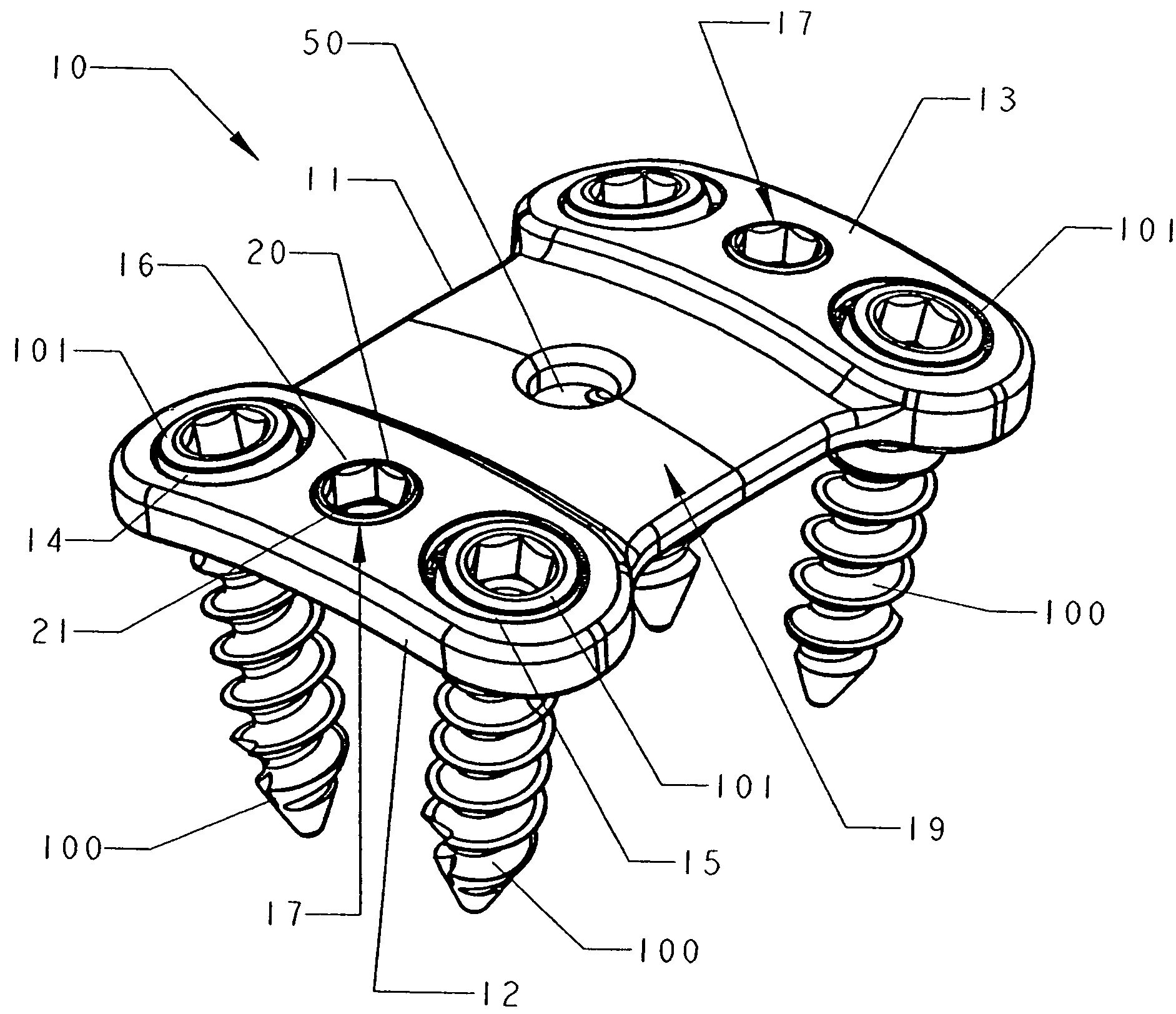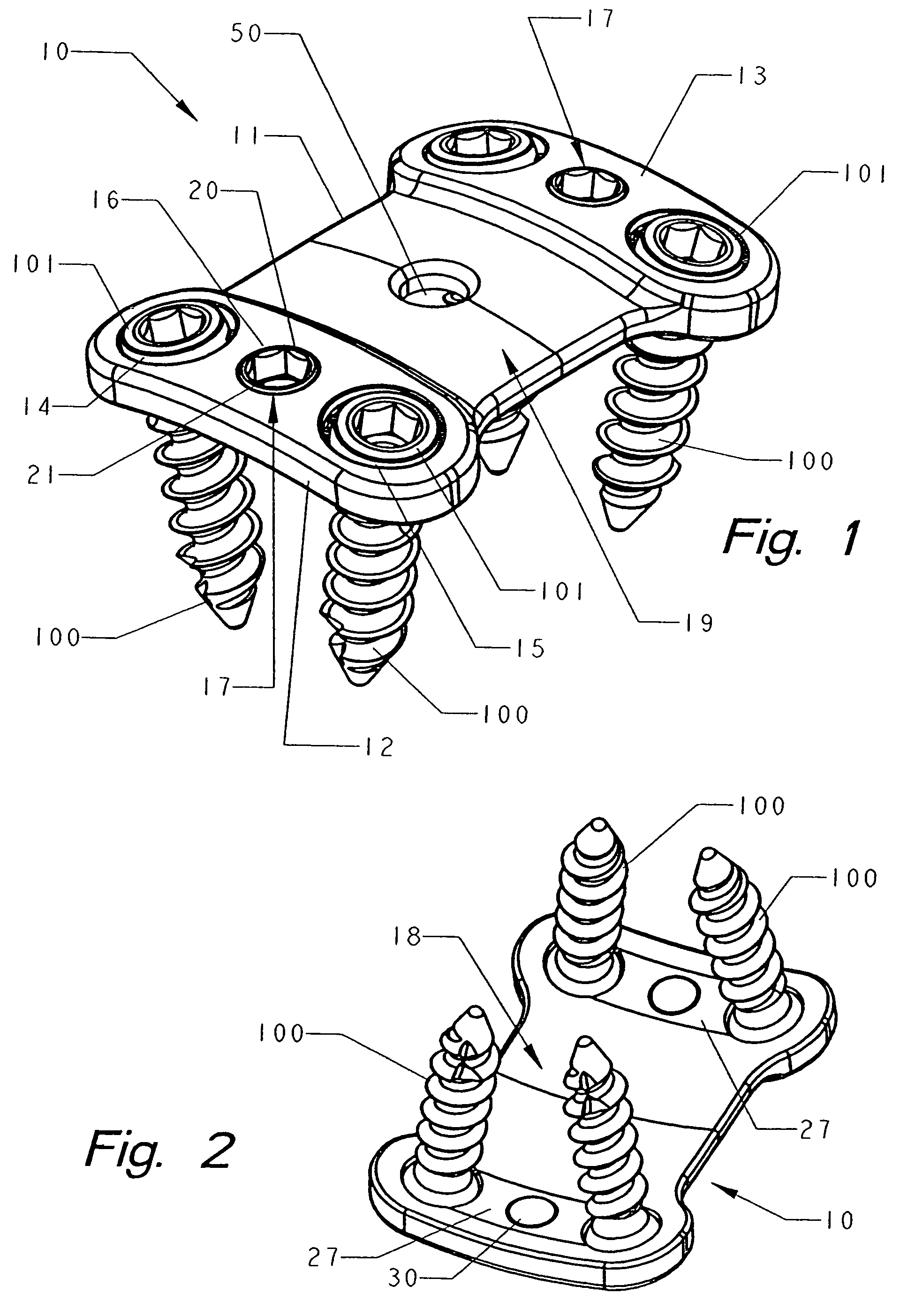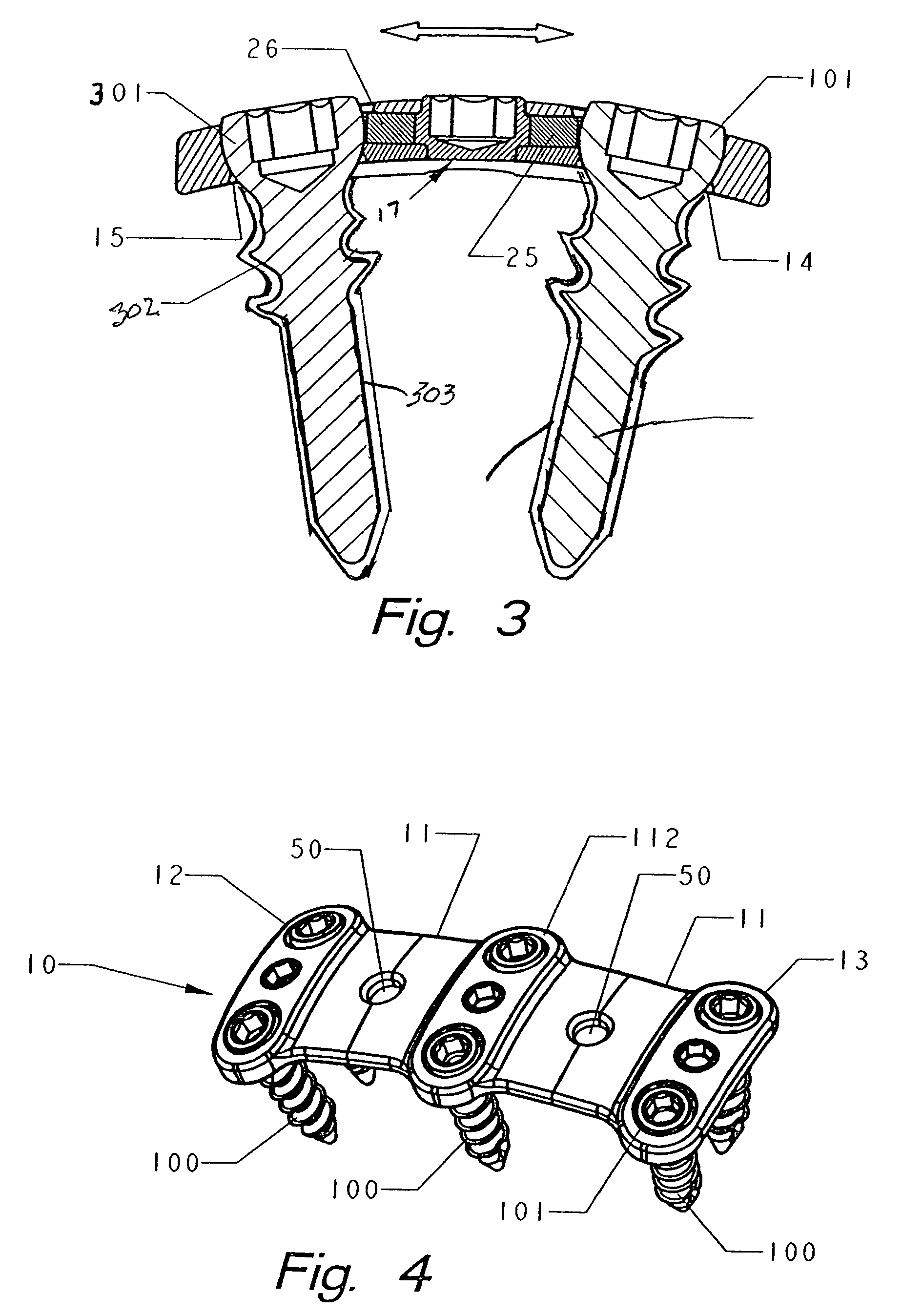Spinal implant kit
a kit and implant technology, applied in the field of kits, can solve the problems of instability of bone or joint, increased pain and danger, and instability of bone screws and bones, and achieve the effects of improving the stability and long-term use increasing pain and danger, and improving the stability of the bone screw and the bon
- Summary
- Abstract
- Description
- Claims
- Application Information
AI Technical Summary
Benefits of technology
Problems solved by technology
Method used
Image
Examples
Embodiment Construction
[0033]The bone plate 10, shown in FIGS. 1, 2, and 4, is based on an elongated span 11 having a first end and a second end with a first bracket 12 on the first end adapted to engage a first vertebrae and a second bracket 13 on the second end adapted to engage a second vertebrae. The first bracket includes a first bone fastener aperture 14 and a second bone fastener aperture 15 with a cam bore 16 located therebetween, each bone fastener aperture being countersunk. Screw threaded fasteners 100 are shown in place with the screw heads 101 resting in the countersunk apertures. This contributes to the low profile of the implant preventing undue trauma to the tissue on the anterior aspect of the cervical spine. A rotating eccentric cam 17, shown in FIG. 8, is mounted in the cam bore.
[0034]The second bracket 13 has the same components as the first bracket 12. An aperture 50 is located in the span 11 to facilitate boney ingrowth to increase stability. In FIG. 4, a bone plate 10 is shown with ...
PUM
 Login to View More
Login to View More Abstract
Description
Claims
Application Information
 Login to View More
Login to View More - R&D
- Intellectual Property
- Life Sciences
- Materials
- Tech Scout
- Unparalleled Data Quality
- Higher Quality Content
- 60% Fewer Hallucinations
Browse by: Latest US Patents, China's latest patents, Technical Efficacy Thesaurus, Application Domain, Technology Topic, Popular Technical Reports.
© 2025 PatSnap. All rights reserved.Legal|Privacy policy|Modern Slavery Act Transparency Statement|Sitemap|About US| Contact US: help@patsnap.com



